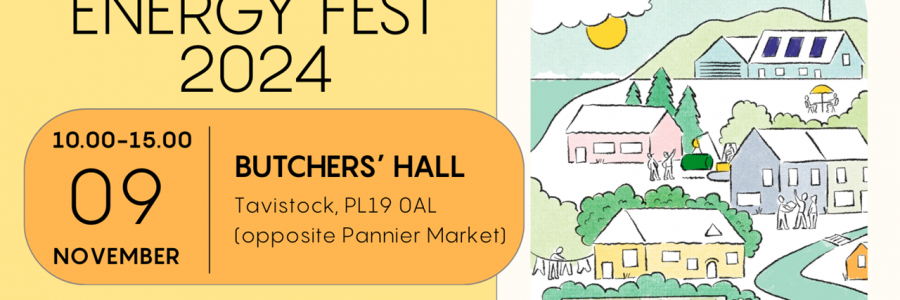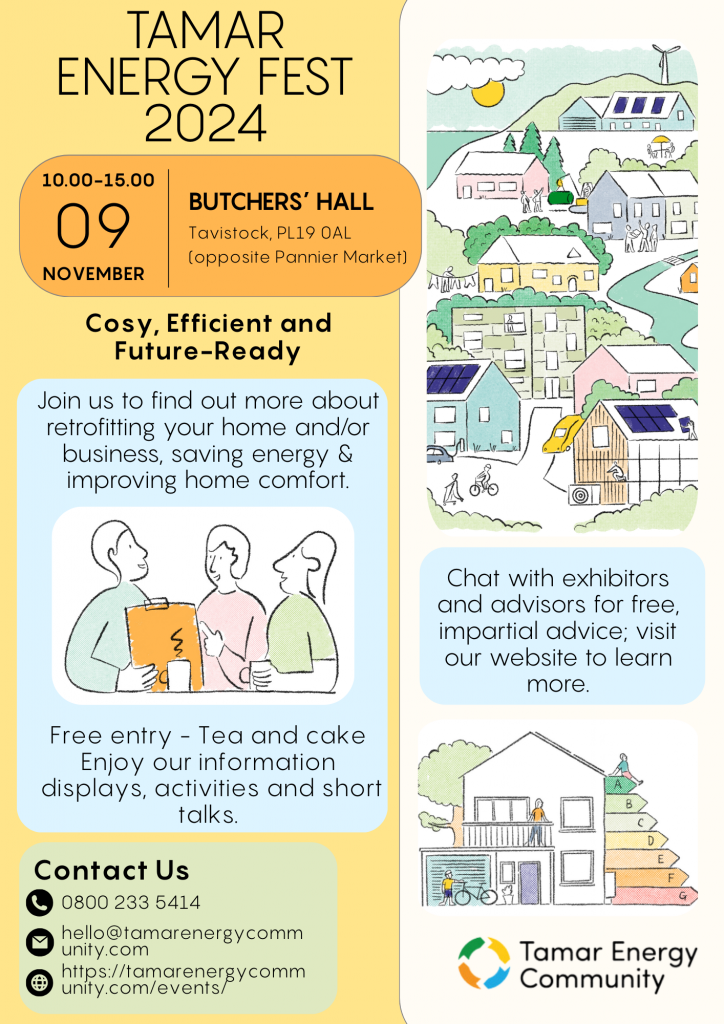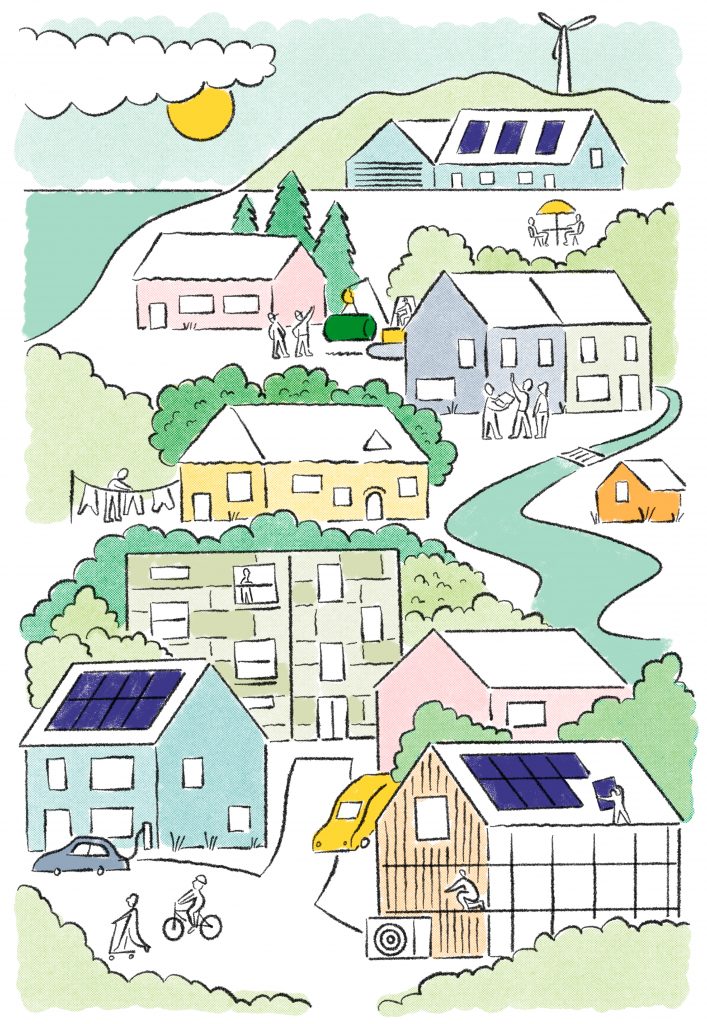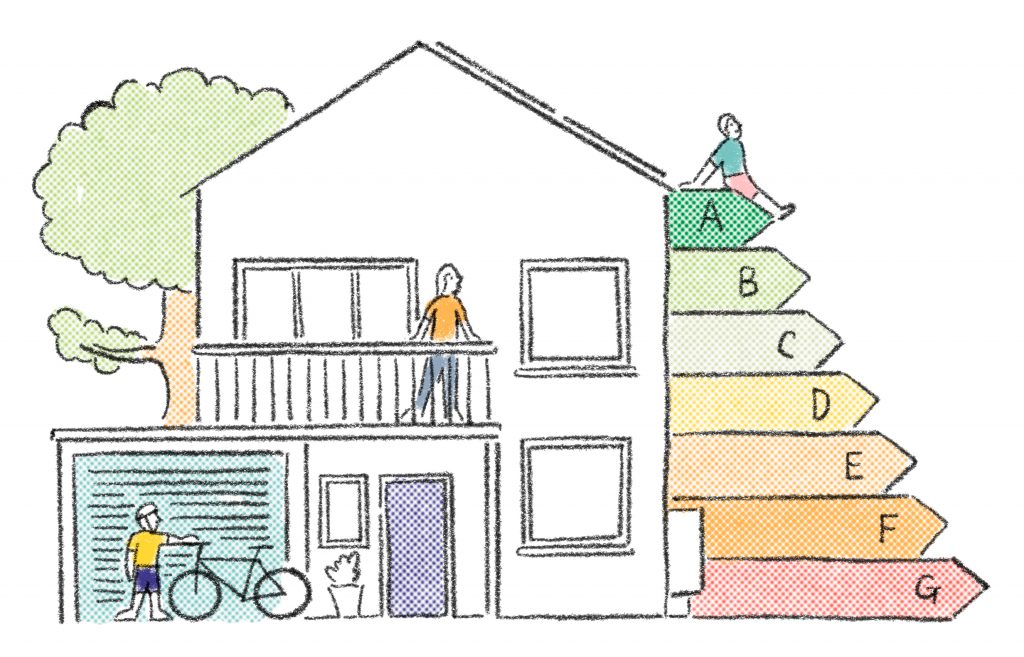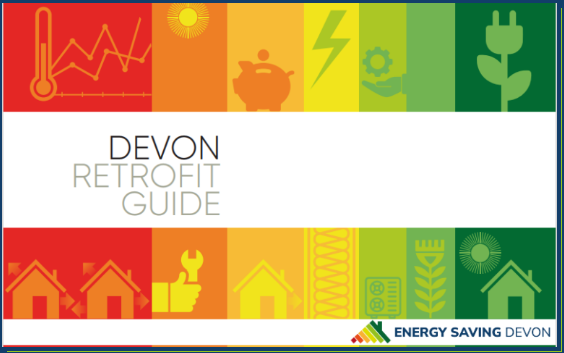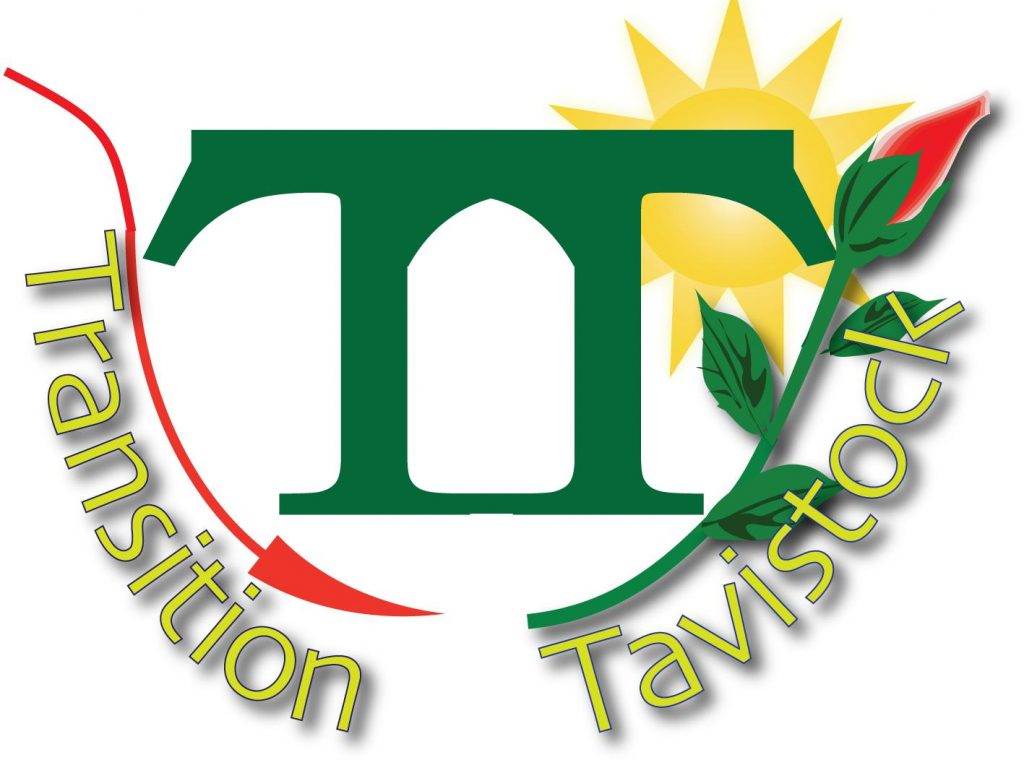Cosy Nights
Over 40 people met at the Old School on 6th February to discuss improving domestic heating efficiency, regardless of boiler type, and the ‘truth and myth’ about heat-pumps. This meeting was arranged in response to interest on this topic from across the Parish, becoming a legacy action from the Carbon Zero Homes Project which was led by the Parish Council, and which was funded by a grant from the Community Levelling Up Programme.
The first speaker was James Fortune from local renewable energy & retrofit specialists, Dartmoor Energy. To everyone’s surprise, James explained that the first heat-pump technology was invented in 1834 in the form of a refrigerator compressor and the first UK installation of a heat generating system was as far back as 1945.
James went on to explain the efficiency advantages and science behind heat-pumps and the different forms they take. James concluded with tips on achieving a good installation and how to use it effectively.
You can find James’ presentation here
Andy Nevill followed with a specific case study of his own installation – an air-source heat-pump installed 2 years ago into a 19th century miner’s cottage. The biggest challenge was fitting under-floor-heating, but heat pump systems can operate in radiator only dwellings. Motivations were to achieve a healthy living environment, to save money and to reduce household emissions. They have measured a 90% reduction in energy use, a 96% reduction in emissions and a 64% reduction in energy costs and now have a healthier lived in environment.
You can find Andy’s presentation here
Jennie Stopford of Cornwall Council gave the audience the big picture of the Council’s program of decarbonising which stretches to 2045 when the objective, for example, is to have 30-50% of houses fitted with photo-voltaic solar panels. With regards to heat-pumps, Cornwall is leading all other counties in the UK with more than 5% of dwellings now fitted with one.
You can find Jenny’s presentation here
Kate Royston from Tamar Energy Community explained how they can support Parish households, including a free visit by one of their retrofit energy advisors to explain all the technical and funding options available, including grants and loans.
You can find Kate’s presentation here
Also exhibiting and taking part in a Q&A session chaired by Richard Davies, were Clare Moody from Community Energy Plus, Jack Morewood from University of Plymouth and Rob Tapson from Eco NRG.
Questions ranged from smart-meters, radiator and/or under floor heating combinations to on-going heatpump servicing.
Amongst the delegates were residents who already have heat-pumps installed, including one Luckett resident who had a system installed as far back as 2010. A bit like speed-dating, residents who had systems installed were matched with those considering if a heat-pump is right for them!
A huge thank you to Edah and her team of community volunteers who gave up their valuable time to refresh and support this meeting, including an amazing spread of canapes.
Scan the QR code here to access a handout from the meeting with contains lots of useful information and contact details. You can also access the handout here.
Stay Cosy!





